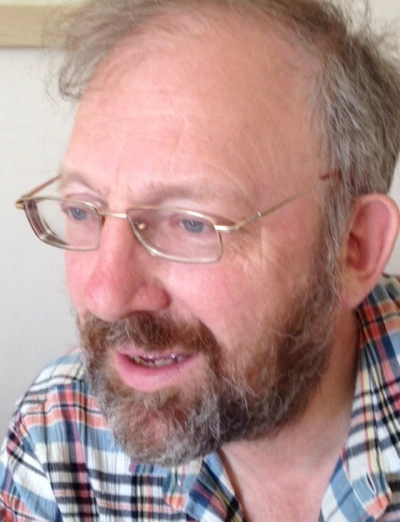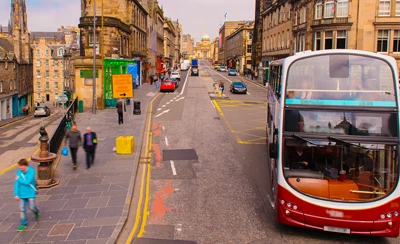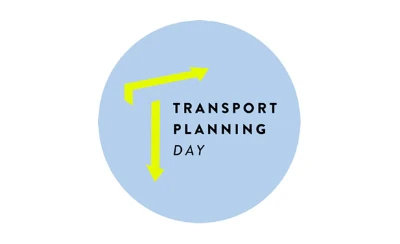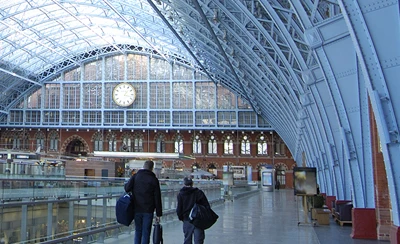Finding common ground on tricky issues
By Perry Walker, from Talk Shop

We live in a world where people tend to seize on the differences they have with others, and then argue about and magnify them. In the world of transport planning, as elsewhere, that means lots of heat, and not much light. It leads, for instance, to highly unpleasant public meetings. I always keep in mind the comment made by the chair after one such meeting, in Hertfordshire: “I feared I was about to witness ethnic cleansing”.
The best approach in such a world is actually straightforward, if not easy. It is simply to emphasise common ground instead of difference. Easier said than done, I hear you muttering. So here are three examples: Polis; Q Method; and the Win-Win Workout.
Polis asks people to make and rate statements. It uses machine learning to create clusters of people with similar attitudes. It then encourages people to propose statements that might command agreement across the clusters. It was used in Taiwan a few years ago, when Uber wanted to enter the country and taxi drivers in Taipei, the capital, surrounded the Ministry of Transport in protest.
Polis showed areas of agreement between pro- and anti-Uber camps. The first was that taxis no longer needed to be painted yellow. This was trivial, but showed that agreement was possible. Later, the following statement got 95% agreement across the board:
The government should leverage this opportunity to challenge the taxi industry to improve their management & quality control system, so that drivers & riders would enjoy the same quality service as Uber.
The Polis results were fleshed out in stakeholder meetings. The government then turned the consensus items from those meetings into the regulations for app-based taxis.
The Polis website is https://pol.is/home . Have a look at www.crowdwisdomproject.org if you want to find out about Polis in the UK.
Whereas Polis generates a relatively small amount of data from each of a large number of participants, Q Method generates a large amount of data from a small number of participants. I used it in Hereford, where I live, on the question of whether there should be a bypass. This has been debated for at least 20 years. On the face of it, there were the usual two camps: for and against. I suspected that the real position was more nuanced, with more common ground than met the eye.
I conducted 23 highly structured interviews with a mix of stakeholders and citizens. These revealed:
- Seven distinct sets of attitudes: three for the bypass; four against.
- A lot of agreement across the divide. For instance, six groups out of the seven agreed that, “Hereford is slowly being strangled by congestion, something needs doing and it needs doing urgently” .
- This common ground suggested a way forward. Alternatives to the bypass, such as a new light railway, might be explored first, to see if they can reduce congestion at lower cost than a bypass.
Lastly, the Win-Win Workout. This is being developed by Talk Shop (www.talkshopuk.org), the small organisation of which I am part. Our strapline is ‘doing democracy differently’. I’m going to spend longest on this, for several reasons. First, the other two methods prepare the way for dialogue with stakeholders and citizens, whereas the Workout is itself a form of dialogue. Second, its elements may be useful to you, whether or not you use the method as a whole. Third, it’s experimental – and we’re looking for experiments.
The chief elements of the Win-Win Workout are one ploy and two questions.
The ploy is to separate the issue, whatever it may be, into two parts. There is the solution – ‘We should have a Low Traffic Neighbourhood’ - which is what people usually argue over. But there are also the aims or principles, which the solution is intended to achieve. The advantages of focussing on aims are:
- There is usually more scope for finding common ground at the level of aims than at the level of solutions. I read about two people in the USA, one pro-life on abortion, one pro-choice. Underneath they had the same aim, which was to reduce the number of unwanted pregnancies.
- It can lead to better solutions. Often, in choosing a solution and arguing for it, people lose sight of why they wanted it in the first place. It may simply not be the best way of achieving their aims.
- The separation helps achieve a better division of labour between (1) stakeholders and citizens, both entirely entitled to express their aims, and (2) transport planners, who are best placed to say what solution would meet those aims.
- Finally, as in the Q example above, it gets us away from the zero sum world of – as above - a bypass yes or no, making possible more creative solutions that work for everyone.
The two questions are:
- “What really matters to you about this?” Asking this, often repeatedly, is how to help people understand their underlying aims – their deepest needs.
- “Can you live with this?” This question comes from consensus decision-making. When possible shared aims are proposed, the question guarantees that the aim is acceptable to all. No-one is pressurised to give up anything of what they want.
Having run a whole series of experiments, on issues ranging from predictive policing to the toppling of the statue of Edward Colston in Bristol, we’ve been exploring how the Win-Win Workout might adapt to the world of transport planning. In doing this, we’ve been encouraged by the positive response we’ve had in discussions with transport planners. Here is Julian Sanchez, who leads on active travel at Essex County Council:
This approach has huge potential to help transport planning practitioners to navigate through the complex world of community engagement. The consortium of partners working at neighbourhood level in Essex would be interested in this approach to developing Active and Liveable Neighbourhoods. We think it provides an interesting approach to finding common ground and managing conflicting views, so that a package of measures can be developed which meet local need while delivering active travel interventions.
Do make contact (perryw@talkshopuk.org) if you’d like to know more, and especially if you could be interested to try our approach. This could be a dummy run using materials we’ve already worked on. (These cover two issues. First, Low Traffic Neighbourhoods in general; second, more specifically, the cycle lane that was installed in Kensington High Street and removed seven weeks later.) Or the trial could be around an issue of yours.







